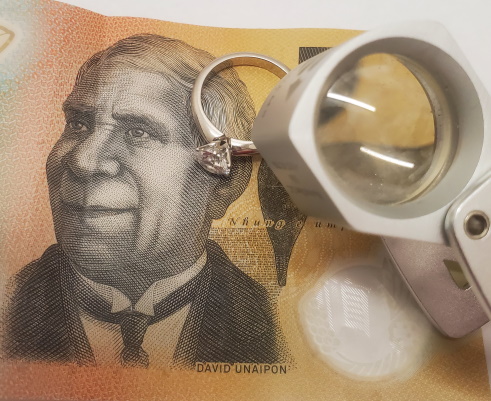This past October came news that 25% of jewellery sold in the United States was sold online. In fact, the 25% figure represented the value sold online, but if you look at the volume, it is actually 31%. This essentially means that nearly one third of all jewellery sold in the United States in 2021 was sold online.
Online Retailing in Australia
In Australia, IBIS World state that the online watch and jewellery retail market is worth $257.5 million in 2022, and the total market is worth $1.3 billion. A quick calculation reveals that the online market is therefore worth just under 20% in terms of value, meaning the online jewellery market as a percentage of total sales is about 20% less than it is in the US.
The fact that the online jewellery market in Australia is much less in comparison to the US is hardly surprising. Having formally started in this industry in 2006, I have witnessed first hand the animosity toward and even exclusion of any retailers who dared sell diamonds or jewellery online. In 2007, I wrote that the industry needed “A Change in Attitude” and embrace fully embrace the internet. However, it is clear that didn’t happen, as in 2010 there was a push to ban internet retailers from JAA.
Fast forward 12 years, and the internet has become ubiquitous in the form of mobile phones, and a pandemic that lasted the best part of three years. This has seen many jewellers boost their online presence and now, pretty much every jeweller has some sort of online presence, leading to a “thaw” in the relationships between online and predominantly brick and mortar retailers.
Jewellery Industry vs Other Retail Industries
However, it is clear that despite a huge push toward online retailing during the last three years, Australian jewellery retailers are still online laggards when compared to other retail industries. As an example, consider the car retailing market. 10 years ago, you could research the specifications and find fairly vague starting or “drive-away” prices online. Today, you can fully customise your new car, find out what is in stock and order a new car online. Once you have paid a small deposit (usually $100-$500), your new car will be ordered and you can then pick it up from a local dealership. This is a far cry from the old days where you had to go from dealer to dealer, test-drive and haggle to get the best deal.
Now compare the process of buying a new car to buying a simple solitaire engagement ring. Despite what some jewellers may say, a simple solitaire engagement ring is very much a fungible item if it is GIA certified. That is, one item with the same specifications from one retailer is very much the same, and therefore is worth the same as another from a different retailer. A quick look at the websites of our local competitors, reveals that it impossible to compare prices on like-to-like items such as a solitaire engagement ring. Sure, there are pictures of engagement rings online, some with vague specifications and prices, but at the end of the day, to buy an engagement ring from one of our local competitors, you will have to physically go to the store, find out what is available and at what price, and then possibly negotiate a better price.
Unlike any other retail industry I can think of, where price transparency is now the norm, the jewellery retailing industry is the only industry that deliberately obscures pricing. The sole reason I can think of is so jewellery retailers can protect their margins and sell to less educated consumers. In fact, parallels can be drawn to the commercial real estate industry, where rental prices are deliberately obscured and tricks like “incentives” are offered to protect the value of the landlord’s property.
Price Transparency May Lead to Higher Profits?

Whilst chain stores such as Michael Hill and others have excellent websites where you can find specifications and prices and then order online, it seems independent jewellers selling high quality, GIA certified diamonds, are still lagging behind the retail industry as a whole when it come to price transparency. This, in my opinion is solely to protect high margins. However, as consumers become more educated and accustomed to online retailing, these retailers will be forced to provide better price transparency. Whilst their sales margins may decrease, it may well be that their profits may increase.